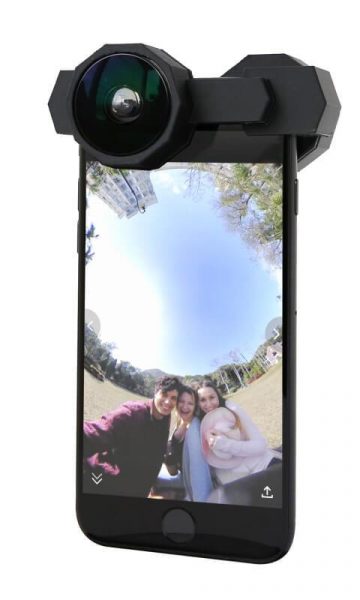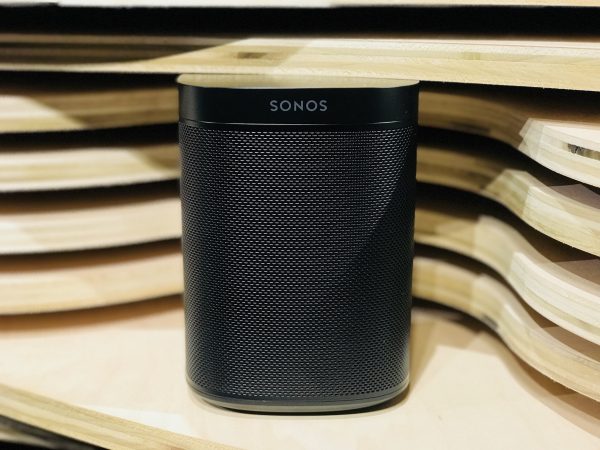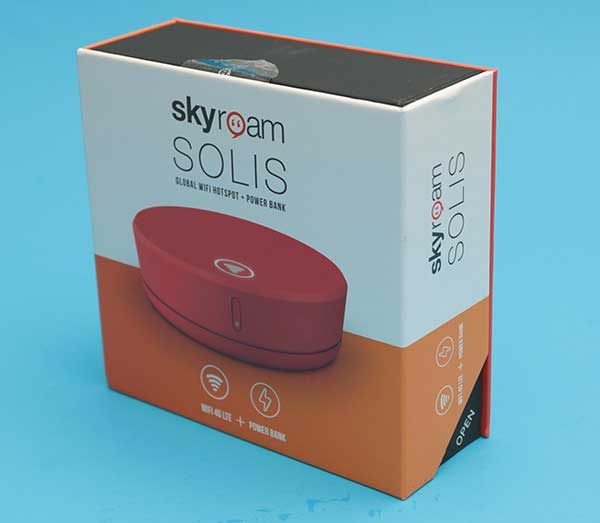
When we are researching for places to spend our vacation, I always ask Jeanne to make sure that the place where we’ll be staying has internet access. Because perish the thought that I take a vacation where I can’t get a little Gadgeteer work done too.
We went on our last vacation knowing that there wouldn’t be any internet at the cabin we were renting, but I stuffed down my panic because I knew we’d only be gone for 2 full days. And as luck would have it, I had a secret weapon to take with us… the Skyroam SOLIS 4G LTE Global WiFi Hotspot.
What is it?
The Skyroam SOLIS is a portable 4G LTE WiFi Hotspot and 6000mAh power bank that provides unlimited daily internet connectivity by using Skyroam’s proprietary global WiFi network which uses local SIM service from nearly 200 carriers. It partners with the best providers to offer a seamless mobile WiFi experience for world travelers in over 100 countries using a virtual SIM, which automatically picks up the cellular connection in your area.
Using Skyroam means you don’t have to mess around with changing your existing wireless plan or worrying about roaming and overage charges.
What’s in the box?

SkyRoam SOLIS
USB Type-C cable
USB Type-C to USB adapter
Quick start guide
Design and features

The SOLIS looks like a bright orange hockey puck that has a power button on the side and a WiFi button on top.

On the back of the SOLIS is a USB Type-C connector that is used to charge the device which can run for 16 to 20hrs on a charge. The Type-C connector is also where you connect the Type-C to USB adapter so you can use the SOLIS as a back battery for your other gadgets.

The bottom cover of the hotspot can be removed to provide access to the battery compartment. In an age where our gadgets are usually sealed, it’s refreshing that the Skyroam SOLIS has replaceable rechargeable batteries.
Let’s get online
As mentioned above, I was excited to receive the Skyroam SOLIS the day before we were planning visit Turkey Run State Park where I knew that there would be no WiFi at the cabin we’d rented.
I made a mistake of not setting up the SOLIS before we left figuring I could do it when we got to our destination. That was almost a fatal mistake because the first thing you have to do to set up the SOLIS is to create an account – ONLINE. Our Verizon phone barely had a signal, which made getting online to check my email for the account info almost impossible.
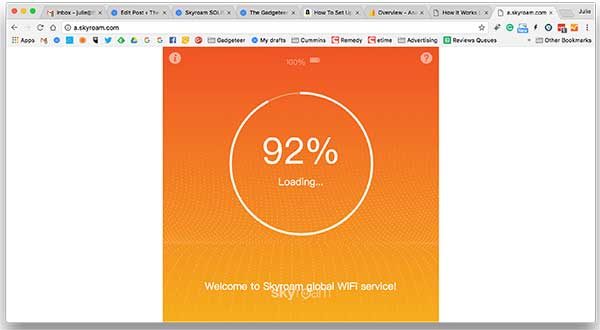
After several tries and some patience, I was able to create the initial account and the SOLIS began the connection process. You have to sit through this loading screen every time you disconnect from the SOLIS hotspot and reconnect. It can take several minutes.
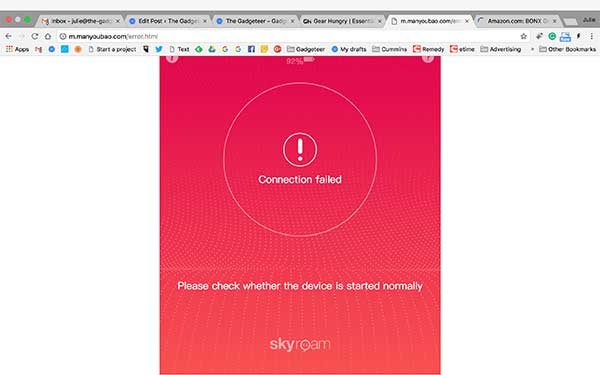
Luckily, SOLIS gives you 20 minutes of free time to set up the hotspot, but without a reliable connection where we were staying, it took a few tries to get it up and running.
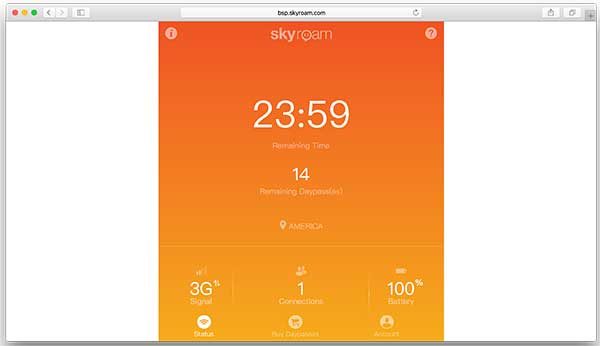
Once you’re fully connected, you can buy your daypasses. The SOLIS comes with one pass and each additional pass after that is $9. Each daypass gives you unlimited internet access for 24 hours.
Note that you can’t turn off the SOLIS an hour after initiating a daypass, wait a day, turn it back on and expect to still have 23hrs of access left. Each daypass only lasts for 24hrs no matter if you use it during that time or not.
Also, if you travel to different countries within a day, the time left on the daypass will be calculated from the time of the location where you activated the device.
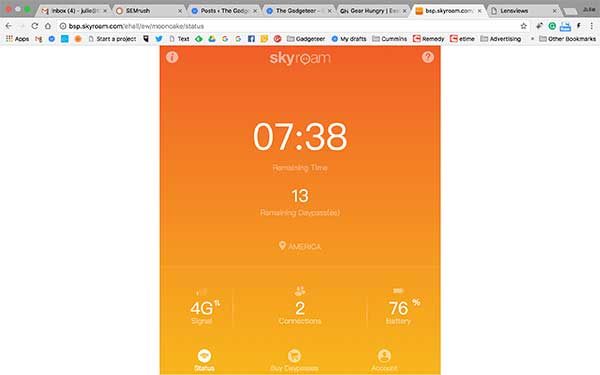
You can always see the status of your connection and time left on your daypass by logging into the Skyroam dashboard.
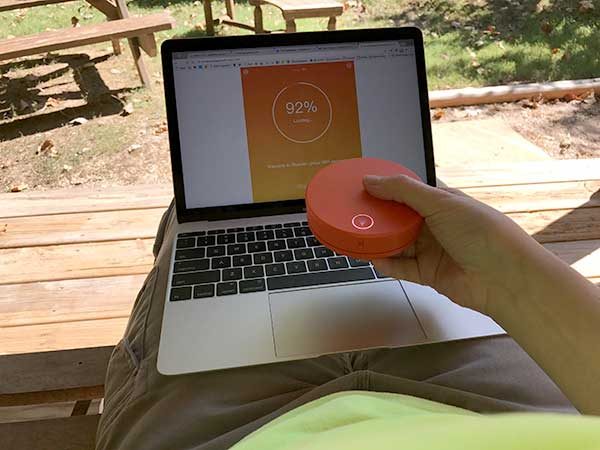
Each Skyroam SOLIS can support up to 5 connections. While we were staying outside the park, we had our phones and my MacBook connected to the SOLIS. The speed was pretty slow and sometimes the dashboard said it was only a 3G connection because there was barely any coverage for Verizon, AT&T or T-Mobile. But whichever wireless carrier that the SOLIS was using at the time, it was good enough for surfing, emailing, and some light Gadgeteer work.
Just be aware that the Skyroam SOLIS is not a magic internet puck. One of their partnered cell providers has to have coverage in your area for it to provide WiFi access.

Skyroam even works great while driving which means it comes in handy for long road trips where you might not want to use your phone as a hotspot.

Fast forward a few weeks… As I’m writing this review, I’m back home now and am connected to the SOLIS in my basement and have the connection speed that you see above. That probably looks really slow to a lot of you, but it works fine even for watching YouTube and Netflix videos (after some buffering time).
But is it too good to be true?
When we were at the Turkey Run State Park, the speed of the Skyroam SOLIS felt noticeably sluggish, but I was just happy to be able to surf and respond to emails so I wasn’t complaining. I thought the significant slowness of the connection was due to the fact that the cell providers in that area had very weak coverage. But as I was working on this review, I stumbled upon info that was buried in the Skyroam support pages and it made my heart sink a bit.
Skyroam markets the SOLIS as a 4G LTE unlimited global hotspot. Which it is. BUT (and it’s a big but), you don’t really get unlimited 4G speeds with this device. After you use 500mb of data, the speed throttles down to 2.5G speeds for the rest of the 24hr daypass. When I asked Skyroam to explain this wrinkle, Cory Jones, Skyroam’s Vice President, Global Marketing & Product, responded with:
“Our goal is to deliver convenient, omnipresent global connectivity for international travelers at a great value. To deliver that, we’ve optimized our service to give Skyroam customers the best performance across our global footprint of 100+ countries. Most users experience the fastest speeds possible since the majority don’t reach 500mb in 24 hours. For those that exceed 500mb in 24 hours, data speed changes to 2.5G for the remaining period of the 24-hour daypass, which compares favorably in the telecom market.
Many find the simplicity Skyroam offers to be a lifesaver – WiFi on-demand data at one rate worldwide. You can even use one daypass in multiple countries, as well as being shareable with travel buddies and among your gadgets with five devices simultaneously. We focus our service on global travelers who see the value through that lens.”
Well, that stinks.

So I created a test. I checked my speed BEFORE using 500MBs of data (see above) and then I started downloading a 512MB test file.
I thought that I had already hit the 500MB threshold before I started the test download because my MacBook reported that it was going to take 2-4 hours to download the 512MB file. Yikes…

But 30MBs into the download, I was still getting good speed using speedtest.net. So I worked on other things (using the Chrome browser with the same WiFi connection to the SOLIS) and let the test file continue downloading in the background.
I watched a few Youtube videos, surfed some of my favorite sites, read news using Feedly, answered emails, and worked on this review.

Everything slowed to a crawl when the test file download hit the 220MB mark. At that point, other tabs in my browser would not refresh. I paused the test file download and did another speed test and got the results shown above. OUCH. I waited 10 minutes and ran the speed test again with almost identical results.
Just to be sure, I checked the Skyroam dashboard to confirm that I was still connected to 4G. I was. I then decided to toggle power on the Skyroam SOLIS, connect back to it and do another speed test.

Same speed.
That speed might look much too slow to do anything worthwhile on the net, but right now I’m watching a YouTube video while I’m writing this. Granted, it took a minute or so for the video to start playing but once it started, it was fine. Low res, but viewable. So is reading and writing emails, reading my news feeds using Feedly through a browser, and even writing this review.
Bottom line: I do think that the >500MB throttling information should be highlighted for potential buyers instead of hiding it in the Skyroam FAQ pages. What do you think, does a 500MB 4G speed cap make the SOLIS less desirable?
Final thoughts
If you are an avid traveler – especially an international traveler who likes to stay connected, the Skyroam SOLIS Global WiFi Hotspot is an affordable way to have internet access where ever you travel (see the country list on the Skyroam site) when you can’t use your mobile phone as a hotspot.
As long as you can live with slower 2.5G speeds after using 500MB of data, I think the SOLIS is a useful gadget for on-demand internet access that at an affordable price.
Source: The sample for this review was provided by Skyroam. Please visit their site for more info and Amazon to order.
Product Information
| Price: |
$149.99 + $9 for each data daypass |
| Manufacturer: |
Skyroam |
| Retailer: |
Amazon |
| Pros: |
- Easy to use
- Global Internet connectivity
- Affordable day passes
- Doubles as a power bank
|
| Cons: |
- Only 500mb is at the highest 4G speeds. Once you go past that, the speed goes down to 2.5G speeds
- Can sometimes take several minutes to get connected
|
Filed in categories: Reviews
Tagged: Cellular
Skyroam SOLIS 4G LTE Global WiFi hotspot review originally appeared on The Gadgeteer on October 17, 2017 at 2:19 pm.
Note: If you are subscribed to this feed through FeedBurner, please switch to our native feed URL http://the-gadgeteer.com/feed/ in order to ensure continuous delivery.
